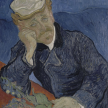Mastering the Art of Crafting Captivating Digital Illustrations from Scratch
Elevate Your Digital Art: Mastering the Craft of Captivating Illustrations

In today's digital age, digital illustrations have become indispensable tools for conveying messages, eliciting emotions, and captivating audiences across various platforms. Whether you're a seasoned artist or a newcomer to the world of digital art, mastering the art of creating captivating digital illustrations from scratch can be an immensely rewarding journey. In this comprehensive guide, we'll delve deep into the step-by-step process of crafting stunning digital illustrations that not only captivate but also resonate with your audience on a profound level.
Ready to transform your artistic vision into captivating creations? Explore our collection
Understanding the Fundamentals of Digital Illustration
Before embarking on your creative journey, it's essential to grasp the fundamentals of digital illustration. Unlike traditional methods, digital illustration involves using specialized software and tools to create artwork digitally. Familiarizing yourself with the basic principles of design, such as composition, color theory, and perspective, lays a solid foundation for your creative endeavors.
Composition: The Backbone of Your Illustration
Composition is the backbone of any great illustration. It refers to the arrangement of elements within the frame and plays a crucial role in guiding the viewer's eye and conveying your intended message. Experiment with different compositions, paying close attention to elements such as balance, symmetry, and focal points to create visually compelling artwork.
Color Theory: Setting the Mood and Tone
Color theory is paramount in evoking emotions and setting the mood of your illustration. Understanding the psychology behind colors enables you to make informed decisions when choosing your color palette. Experiment with different color combinations, gradients, and shades to evoke the desired emotions and create visual harmony within your artwork.
Perspective: Adding Depth and Dimension
Perspective adds depth and dimension to your illustrations, making them more immersive and engaging. Experiment with different perspectives, such as one-point, two-point, or three-point perspective, to create dynamic compositions that draw viewers into your artwork. Pay attention to vanishing points and foreshortening to create a sense of realism and depth within your illustrations.
Selecting the Right Tools and Software
Choosing the right tools and software is crucial for bringing your creative vision to life. With a myriad of digital illustration software available, each offering its unique features and capabilities, it can be challenging to determine which one best suits your needs. Popular options include Adobe Illustrator, Procreate, Affinity Designer, and Autodesk Sketchbook. Experimenting with different tools allows you to find the ones that seamlessly integrate into your workflow and complement your artistic style.
Adobe Illustrator: The Industry Standard
Adobe Illustrator is a versatile vector-based software widely used by professional illustrators and designers. Known for its robust set of tools and extensive functionality, Illustrator allows you to create scalable artwork with precision and flexibility. Whether you're creating logos, icons, or illustrations, Illustrator provides a comprehensive suite of features to bring your creative vision to life.
Procreate: Unleash Your Creativity on the iPad
Procreate is a powerful digital illustration app designed exclusively for the iPad. With its intuitive interface and the vast array of brushes and tools, Procreate empowers artists to sketch, paint, and illustrate with ease. Whether you're a digital nomad or a studio artist, Procreate offers the flexibility and versatility to create stunning artwork wherever inspiration strikes.
Affinity Designer: Professional-grade Vector Illustration
Affinity Designer is a professional-grade vector illustration software that combines power and affordability. With its sleek interface and extensive feature set, Affinity Designer provides a compelling alternative to Adobe Illustrator. Whether you're designing logos, branding materials, or intricate illustrations, Affinity Designer offers the precision and performance you need to bring your creative vision to life.
Autodesk Sketchbook: Sketching and Drawing Redefined
Autodesk Sketchbook is a versatile digital sketching and drawing app available on multiple platforms. With its intuitive interface and expansive toolset, Sketchbook offers artists a seamless sketching experience on both desktop and mobile devices. Whether you're sketching concepts, storyboarding, or creating detailed illustrations, Sketchbook provides the tools and flexibility to unleash your creativity.
Sketching and Ideation
Every great illustration begins with a concept or idea. Sketching is an essential part of the creative process, allowing you to explore various concepts, compositions, and visual elements before diving into the digital realm. Whether you prefer traditional sketching methods using pen and paper or digital sketching tools such as tablets or drawing pads, sketching enables you to flesh out your ideas and refine your concepts before moving on to the next stage.
Traditional Sketching: Pen and Paper
Traditional sketching using pen and paper offers a tactile and intimate creative experience. With a simple sketchbook and a set of drawing utensils, you can unleash your creativity and explore different concepts and compositions with ease. Whether you're sketching on the go or in the comfort of your studio, traditional sketching provides a tangible connection to your artwork and allows for spontaneous creativity.
Digital Sketching: Tablets and Drawing Pads
Digital sketching offers artists the convenience and flexibility to create artwork digitally using tablets or drawing pads. With a wide range of digital sketching tools and software available, artists can sketch, paint, and illustrate with precision and control. Whether you're using a stylus or your fingers, digital sketching enables you to experiment with different brushes, textures, and effects to bring your creative vision to life.
Refining Your Composition
Once you've settled on a concept, it's time to refine your composition. A well-crafted composition is essential for creating visually compelling artwork that resonates with your audience. Experiment with different arrangements, perspectives, and visual elements to find the composition that best conveys your message or story. Pay close attention to elements such as balance, symmetry, and focal points to create a cohesive and visually appealing layout.
Balance and Symmetry: Creating Visual Harmony
Balance and symmetry are fundamental principles of design that contribute to the overall aesthetic appeal of your illustration. Experiment with symmetrical and asymmetrical compositions to create visual interest and harmony within your artwork. Pay attention to the distribution of visual weight and the relationship between positive and negative space to achieve balance and cohesion in your composition.
Focal Points: Guiding the Viewer's Eye
Focal points are areas of emphasis within your illustration that draw the viewer's eye and convey your intended message. Experiment with different focal points, such as contrasting colors, textures, or subjects, to create a visual hierarchy and guide the viewer's gaze throughout your artwork. Pay attention to the placement and scale of focal points to create a sense of depth and movement within your composition.
Adding Depth and Detail
Detail is what sets exceptional digital illustrations apart from the rest. Adding depth and detail to your artwork enhances its visual appeal and draws viewers into your creation. Experiment with different shading techniques, textures, and effects to add depth and dimension to your illustrations. Pay attention to lighting and shadows to create a sense of realism and depth within your artwork.
Shading and Highlights: Creating Depth and Dimension
Shading and highlights are essential for creating depth and dimension within your illustrations. Experiment with different shading techniques, such as hatching, cross-hatching, and stippling, to add volume and form to your artwork. Pay attention to light sources and shadows to create realistic lighting effects and add depth to your illustration. Additionally, incorporating highlights and reflections adds visual interest and realism to your artwork, making it more dynamic and immersive.
Textures and Patterns: Adding Visual Interest
Textures and patterns add richness and complexity to your illustrations, making them more visually compelling. Experiment with different textures, such as wood grain, fabric, or metal, to add tactile quality to your artwork. Incorporating patterns, such as geometric shapes or floral motifs, can also enhance the visual interest of your illustration. Pay attention to scale and repetition to create visually appealing textures and patterns that complement your composition.
Effects and Filters: Enhancing Your Artwork
Effects and filters can add an extra layer of polish and sophistication to your illustrations. Experiment with different effects, such as blurs, glows, and distortions, to add depth and atmosphere to your artwork. Incorporating filters, such as vintage or sepia tones, can also evoke a specific mood or aesthetic within your illustration. Remember to use effects and filters judiciously, ensuring they enhance rather than detract from your overall composition.
Incorporating Color and Texture
Color and texture play a pivotal role in evoking emotions and setting the mood of your illustration. Choosing the right color palette and incorporating textures can elevate your artwork and create a more immersive experience for your audience.
Color Palette: Setting the Tone
Selecting the right color palette is essential for conveying the mood and tone of your illustration. Consider the emotions you want to evoke and choose colors that reflect those feelings. Experiment with different color combinations, hues, and saturations to create a harmonious palette that enhances your composition. Pay attention to color theory principles, such as complementary or analogous colors, to create visually pleasing contrasts and harmonies within your artwork.
Texture: Adding Depth and Dimension
Texture adds depth and dimension to your illustrations, making them more tactile and engaging. Experiment with different textures, such as rough, smooth, or textured brushes, to add visual interest and realism to your artwork. Incorporating texture overlays or patterns can also enhance the richness and complexity of your illustration. Pay attention to scale and placement to ensure textures complement your composition and enhance the overall visual impact of your artwork.
Adding the Finishing Touches
The finishing touches can elevate your digital illustration from good to great. Paying attention to small details and refining your artwork ensures it stands out and leaves a lasting impression on your audience.
Highlights and Shadows: Enhancing Realism
Highlights and shadows add depth and dimension to your illustrations, enhancing realism and creating a sense of depth. Pay attention to light sources and cast shadows to ensure consistency and accuracy within your artwork. Experiment with different blending modes and opacity levels to achieve the desired lighting effects. Incorporating highlights and shadows adds depth and dimension to your illustration, making it more visually compelling and immersive.
Details and Embellishments: Adding Personality
Details and embellishments add personality and character to your artwork, making it unique and memorable. Pay attention to small details, such as textures, patterns, and intricate linework, to add visual interest and complexity to your illustration. Experiment with different brushes and techniques to create dynamic and expressive strokes. Incorporating subtle details and embellishments can enhance the overall visual impact of your artwork and make it more engaging for your audience.
Conclusion
Crafting captivating digital illustrations from scratch is a rewarding and fulfilling creative process. By understanding the fundamentals of digital illustration, selecting the right tools and software, and honing your skills through sketching and experimentation, you can unleash your creativity and produce artwork that captivates and inspires. Remember to embrace experimentation, stay true to your artistic vision, and never stop learning and growing as an artist.
About the Creator
James Moody
Follow me and you will find great benefit from the stories that enrich your professional life. I will transfer to you my accumulated practical and life experiences.






Comments
There are no comments for this story
Be the first to respond and start the conversation.